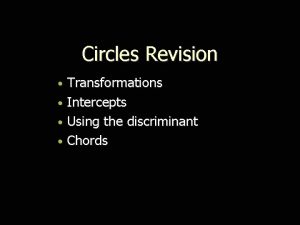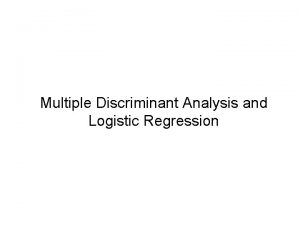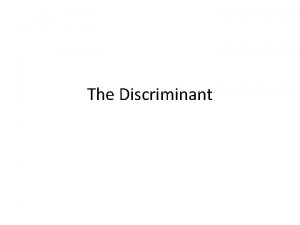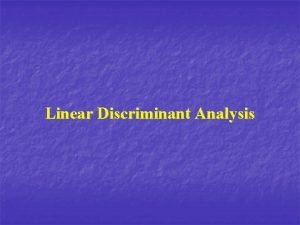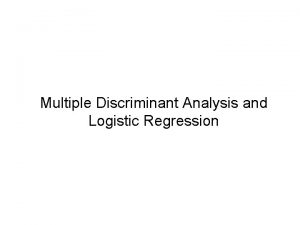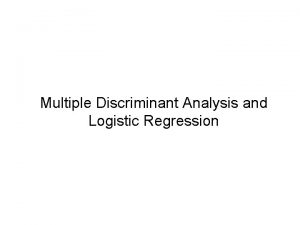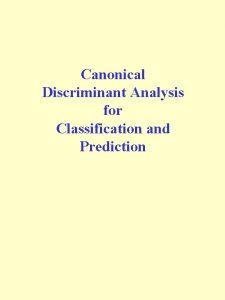The Discriminant The DISCRIMINANT the part of the








- Slides: 8

The Discriminant

The DISCRIMINANT (the part of the quadratic equation underneath the radical) will help you to predict the number of solutions any quadratic equation has. If the DISCRIMINANT is: positive there will be 2 solutions negative there will be NO solution zero there will be 1 solution

positive discriminant negative discriminant zero discriminant x 2 – 5 x + 2 = 0 2 x 2 + x + 3 = 0 x 2 + 6 x + 9 = 0 b 2 – 4 ac = (-5)2 - 4(1)(2) b 2 – 4 ac = (1)2 - 4(2)(3) b 2 – 4 ac = (6)2 - 4(1)(9) d ine f e d un 2 real roots 0 real roots 1 real root double root

Find the value of the discriminant. Then use the value to determine whether the equation has two solutions, one solution or no real solution. negative discriminant: no real solution zero discriminant: one solution positive discriminant: two solutions

Determine the number of x-intercepts (two, one or none) of the graph of the function without graphing. positive discriminant: 2 x-intercepts negative discriminant: no x-intercepts zero discriminant: 1 x-intercept

Without graphing, determine the x-intercepts of the graph of each function: These problems ask for the actual x-intercepts, but you can save time using the discriminant first. b 2 -4 ac Since discriminant is positive, finish solving quad. formula b 2 -4 ac Since discriminant is negative, stop solving, there is no solution.

Without graphing, determine the x-intercepts of the graph of each function: b 2 -4 ac Since discriminant is positive, finish solving quad. formula b 2 -4 ac Since discriminant is zero, you will have ONE solution

In word problems, which we will get to tomorrow, if you are asked if something is possible, that means find the discriminant. If it is positive or zero, then it is possible. If it is negative, then it is not possible because it would be no solution. We will get into more word problems tomorrow.







